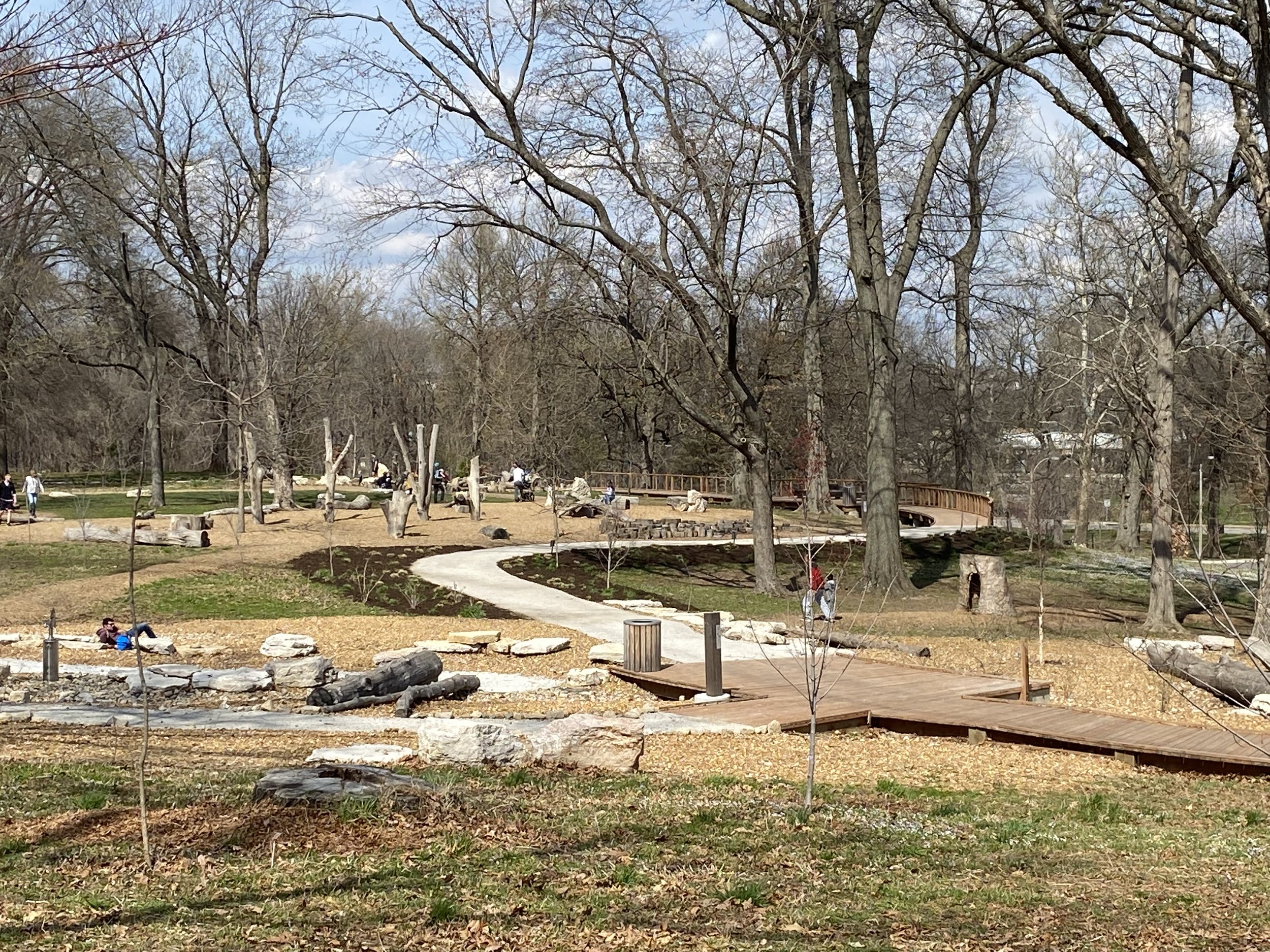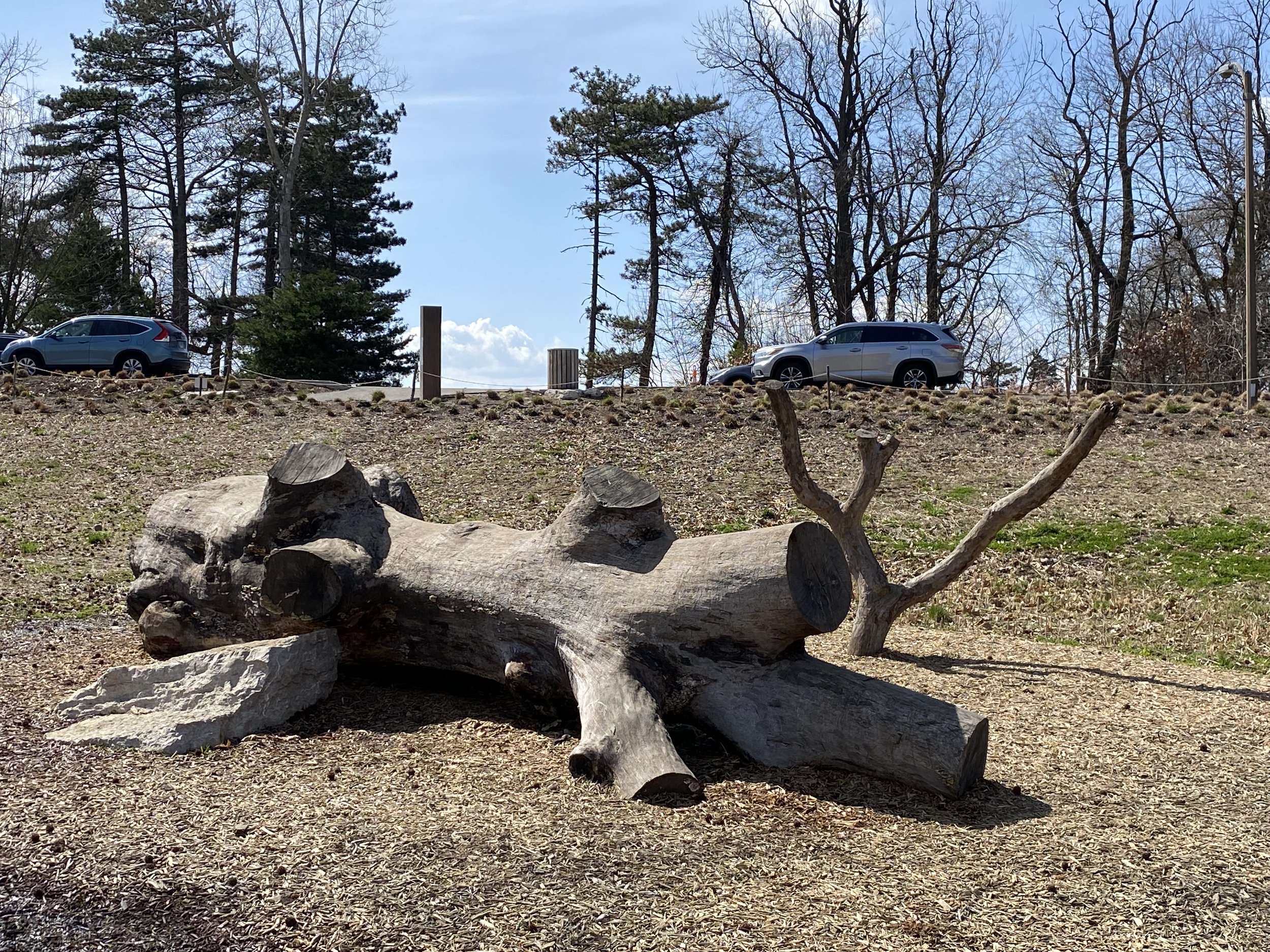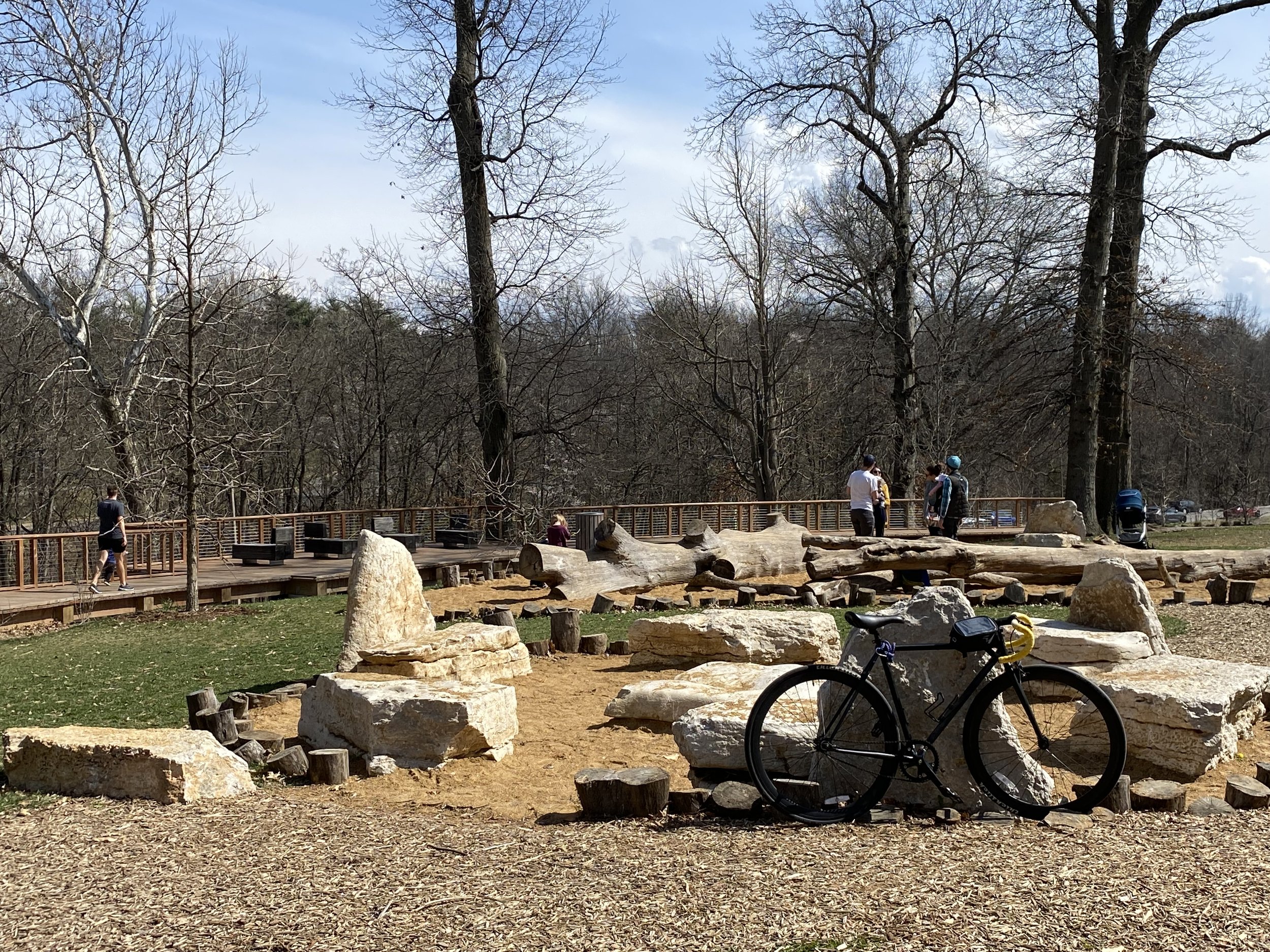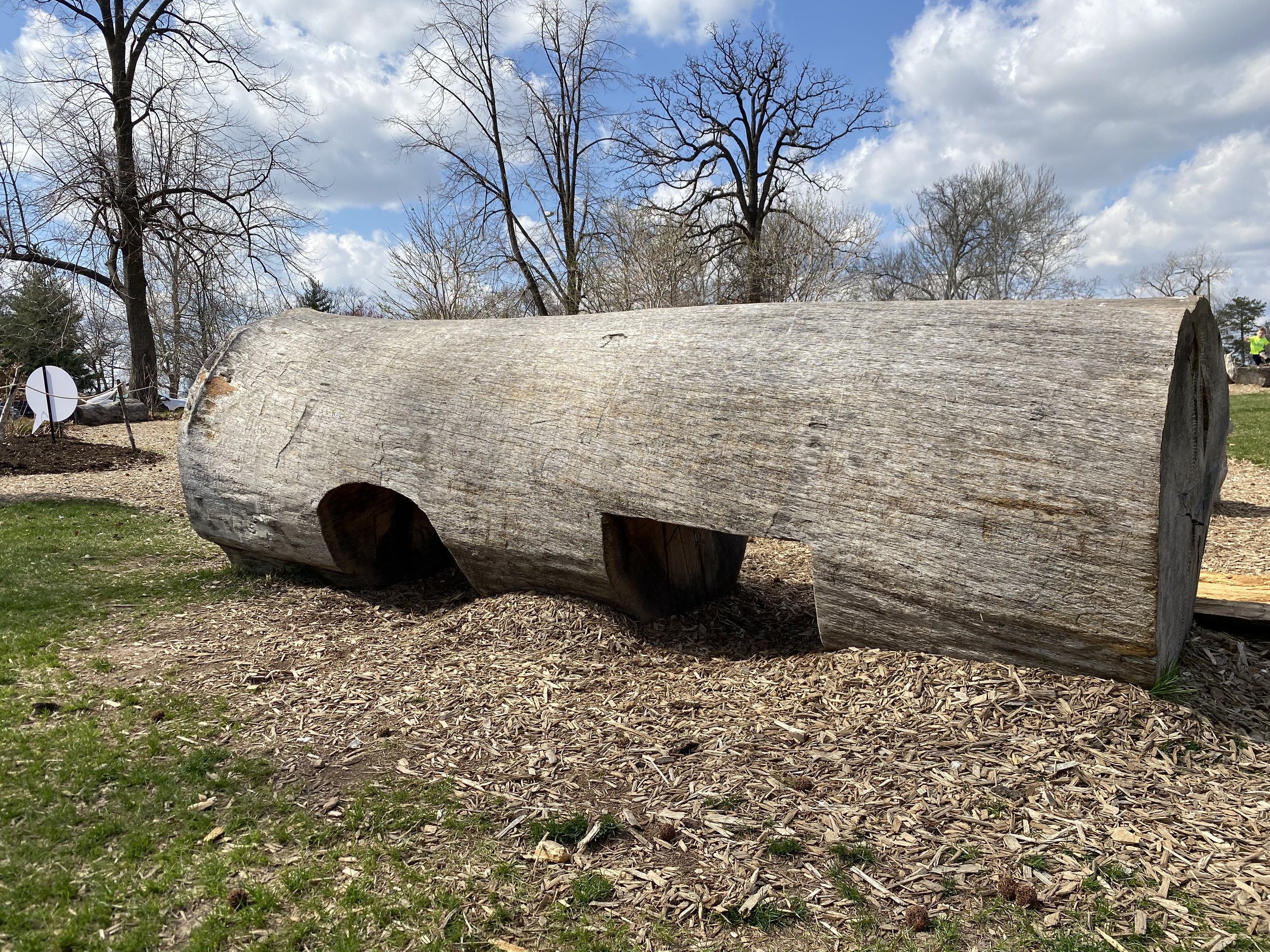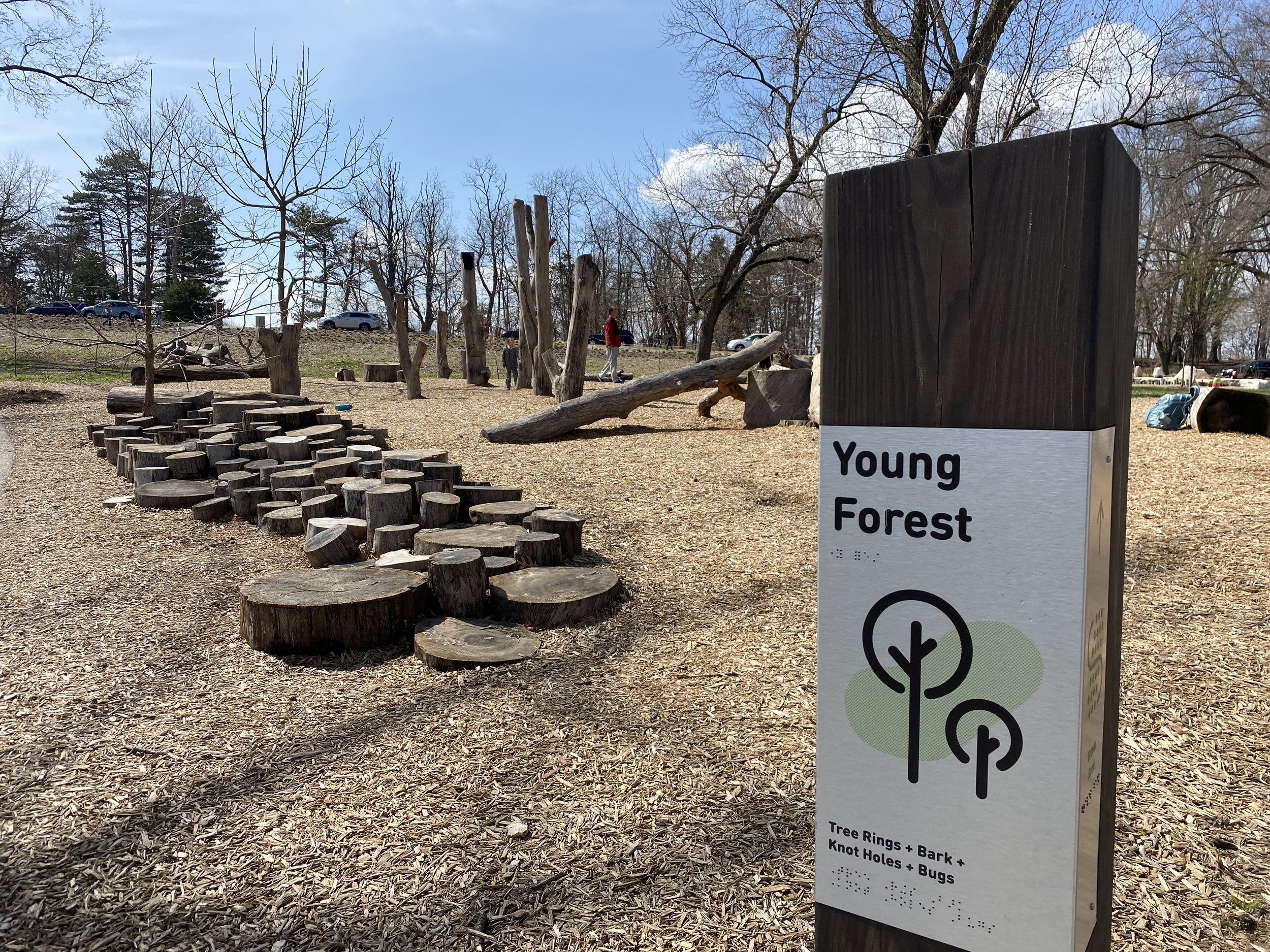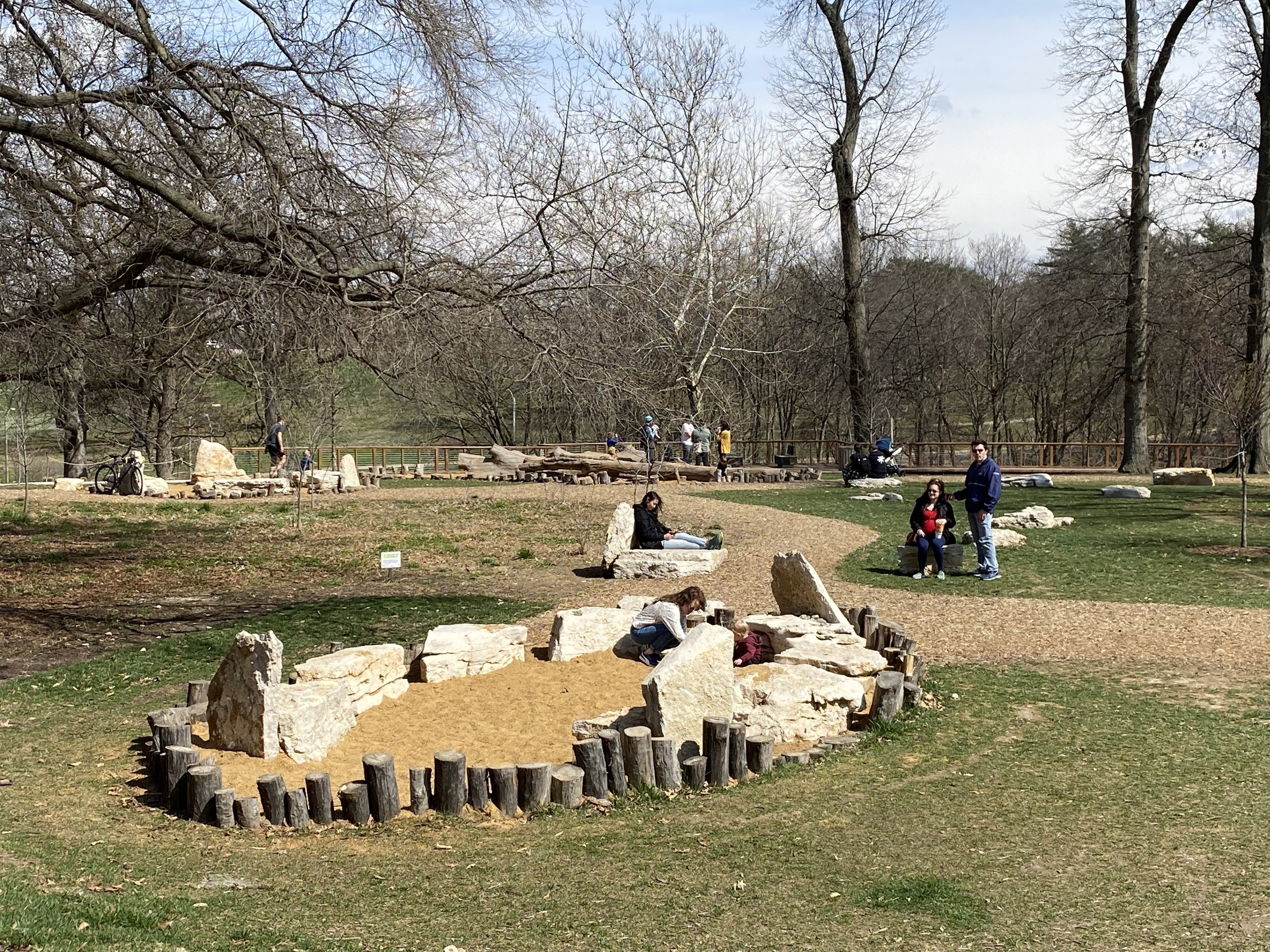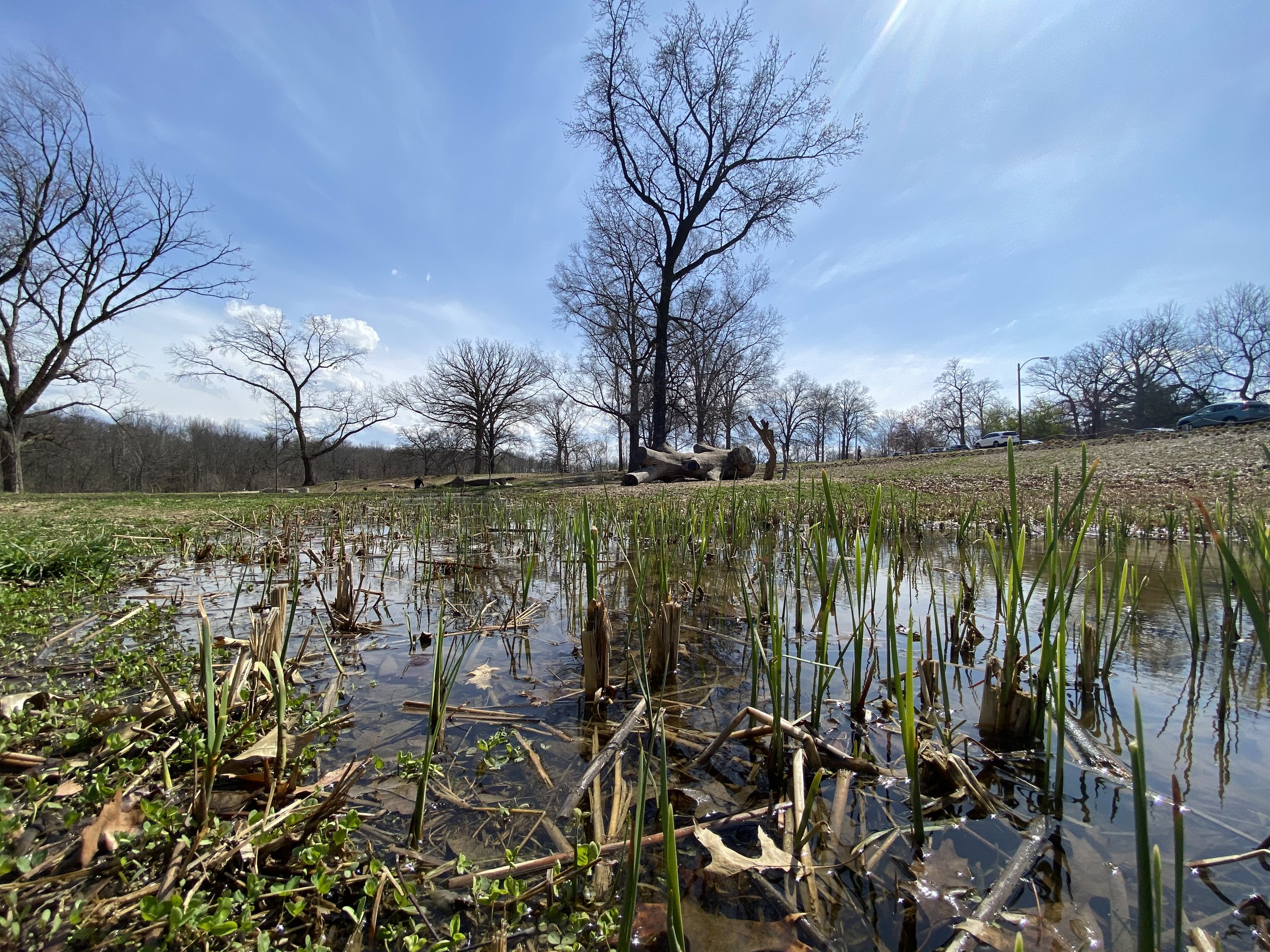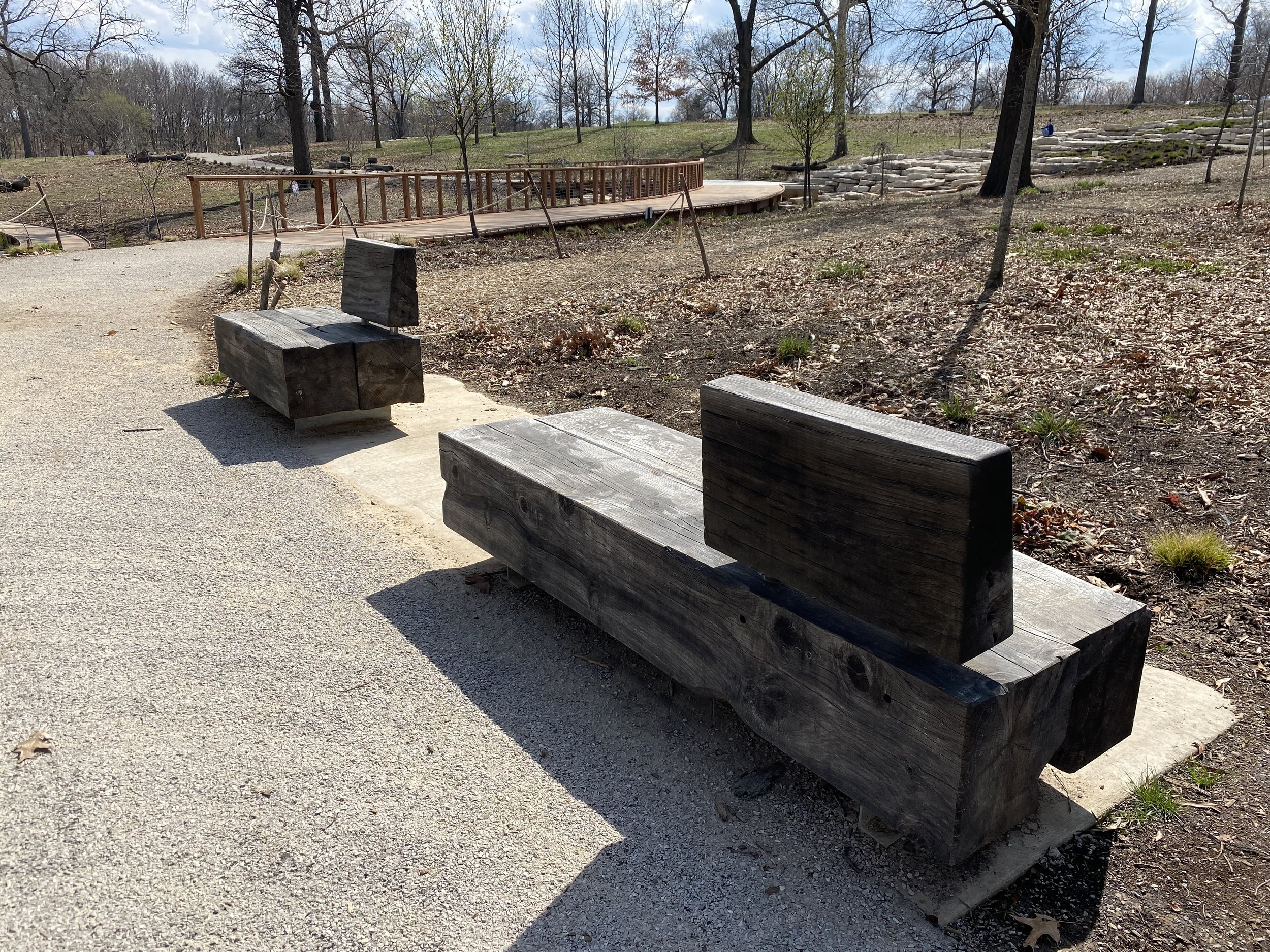Shannon and I were on the southwest side running some errands on a beautiful Saturday afternoon. We had some spare time and decided to stop by the recently installed nature playscape in Forest Park, just southeast of the World’s Fair Pavilion.
The Anne O’C. Albrecht Nature Playscape was recently opened to the public in June, 2021 after a massive two-year undertaking to transform 17 acres of formerly underwhelming, inactive space to a place that will be wildly popular for visitors and city residents enjoying Forest Park, especially with toddlers in tow.
This installation was funded by donations to Forest Park Forever and others.
We wanted to check the place out before the plants and trees bloom and the water features are activated. April is just around, and the water features should be active April through October. So today’s visit and photos will show the before view.
I thought it would be fun to post this and come back later and compare and contrast. Landscape architects are smart and inventive and I like seeing how they envision placement and species. While I’m not good at identifying trees before they leaf out, I’ll come back with commentary on tree selections…and there are many new trees to provide shade and cover. The press release from Forest Park Forever cites 300 trees, 700 shrubs and 40,000 perennials. This is going to explode come late Spring.
The area is organized into several different ecosystems including wetlands, bottomland forest, upland prairie, young forest and features hardscapes including meadows, mounds, springs, gravel banks and a sensory garden.
The design seems focused on letting kids run, play and be wild. In our memories, we know that zoos and museums are fun places to take the kids, but what they really want to do is run free and get dirty. This is a place exactly for that, strategically located a short walk from the zoo.
The topography of this site is challenging; and to my amateur eye, the design uses the natural slope to its advantage. The water features and hand pumps should naturally flow to the east, using gravity to move the water under a few boardwalks and over stone structures.
The low lying areas where water collected is still there, planted with what might be cattails. The frogs are on the scene adding their section to the song of birds and bugs and other animals.
The materials are largely natural, including some attractive wood benches.
I think this will be another memorable, iconic place for the park. One where people from all around will enjoy and take photos and relax after a long day in the city and the parks.
This is just another reason to move to the Dogtown neighborhoods, Central West End, Forest Park Southeast, DeBaliviere Place, Skinker DeBaliviere, Wydown Skinker and walk or ride to the park for solace.
We’ll head back for another visit and show the area when the plants and trees leaf out.




